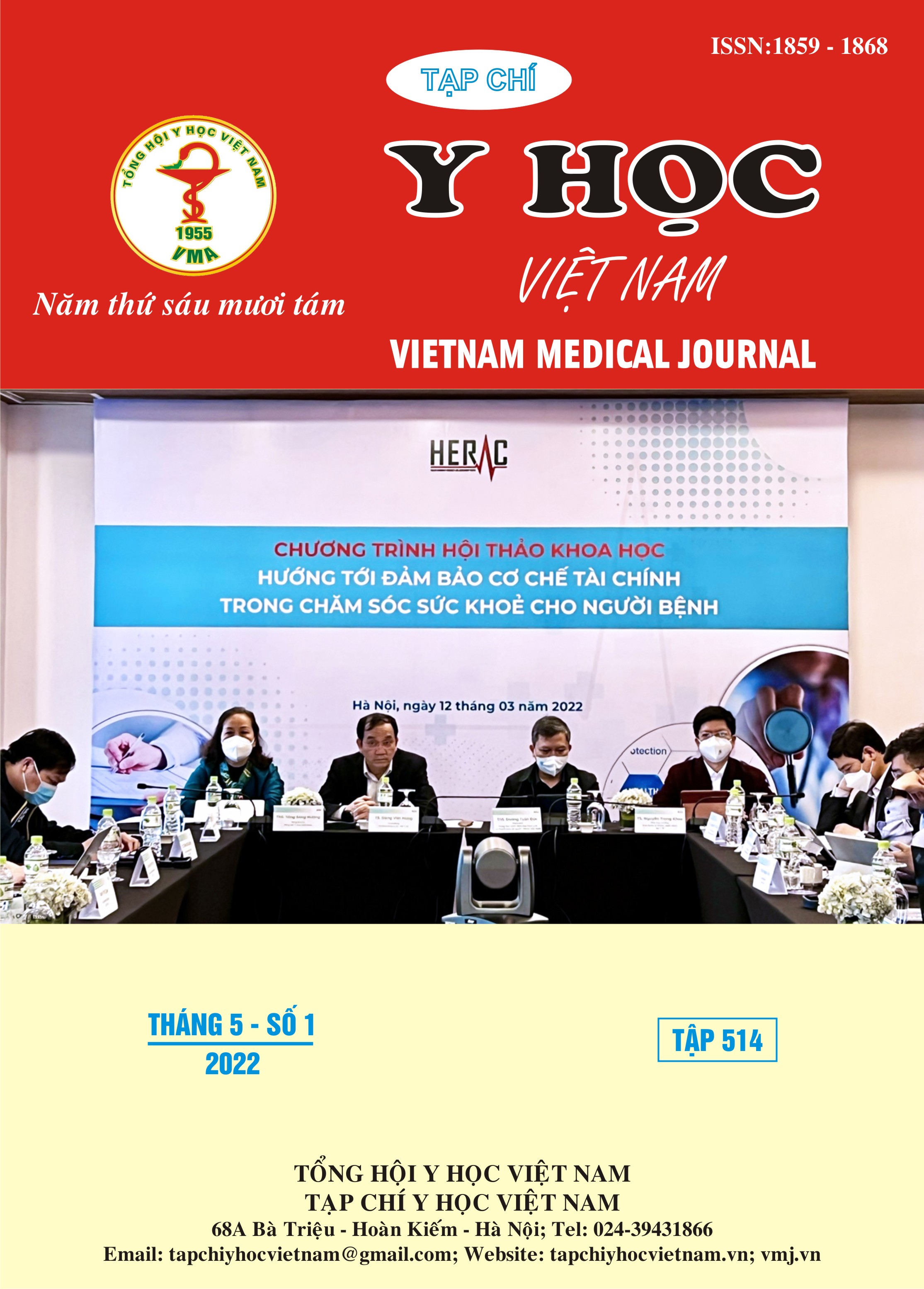CHARACTERISTICS OF CLEFT LIP AND/OR PALATE IN CHILDREN ATTENDED TO TREATMENT AT HANOI CENTRAL ODONTO-STOMATOLOGY HOSPITAL, 2019-2021
Main Article Content
Abstract
Objective: The current study aimed to describe demographic characteristics and some characteristics of weight, detal health or challenges that children often face. Methodology: A cross-sectional descriptive study was conducted on 196 children under 15 years of age with cleft lip and/or palate who attended to treatment at Hanoi Central Odonto-Stomatology Hospital. Result: The proportion of male (64.8%) was higher than that of female (35.2%). The majority of children with cleft lip and/or palate were found in families with low or medium socioeconomic status and level of education (47.66%) and their father used to smoke and drink alcohol frequently. About 60% of children had challenges including eating and sucking, followed by problems with speech, communication and infections. Most children have normal weight but the rate of underweight was recorded quite high, accounting for 12.8%. Conclusion: The rate of male children with malformations was higher than that of the latter.The rate of children with cleft lip or cleft palate alone is over 2 times higher than that with these two malformations simultaneously. The parents hadlow or medium socioeconomic status and level of education. The percentage of mothers had been exposed to maternal passive smoking was quite high. Children often had dental problems, in which the most reported were lack of gap for teeth (45.9%), tooth position abnormalities (38.8%), and delayed teething (25.5%), while more than 16% of parents unknown about dental problems of their child. Summally, challenges composed of eating, sucking and dental health were the most common in children with cleft lip and/or cleft palate and need parental attention.
Article Details
Keywords
Characteristics, Cleft lip and/or palate, Children, Hanoi Central Odonto-Stomatology Hospital
References
2. Yanfen Yang HL, Ruixin Ma, Lei Jin (2018). Prevalence of Cleft Lip/Palate in the Fangshan District of Beijing, 2006-2012. Cleft Palate Craniofac J, 55(9), 1296–1301.
3. Lâm Hoài Phương (2007), Dị tật bẩm sinh hàm mặt, Nhà xuất bản Y học, Hà Nội.
4. George Wehby CHC (2010). The Impact of Orofacial Clefts on Quality of Life and Health Care Use and Costs. Oral Dis, 16(1), 3–10.
5. Vũ Quang Hưng, Phạm Thị Nhung, Đoàn Trung Hiếu (2021). Hình thái dị tật khe hở môi, vòm miệng bẩm sinh ở trẻ em tại bệnh viện Đại học Y Hải Phòng. Tạp Chí Học Việt Nam, 503(2), 247–251.
6. Yingxian Zhu HM, Qinghui Zeng, et al (2021). Prevalence of cleft lip and/or cleft palate in Guangdong province, China, 2015–2018: a spatio-temporal descriptive analysis. BMJ Open, 11(8), e046430.
7. Sima Dabbaghi Galeh, Masoud Nouri-Vaskeh, Mahdieh Alipour, Shahin Abdollahi Fakhim (2020). Clinical and Demographical Characteristics of Cleft Lip and/or Palate in the Northwest of Iran: An Analysis of 1500 Patients. Cleft Palate Craniofac J, 58(10), 1281–1286.
8. Alfwaress FS, Khwaileh FA, Rawashdeh MAA, Alomari MA, Nazzal MS (2017). Cleft lip and palate: demographic patterns and the associated communication disorders. J Craniofac Surg, 28(8), 2117–2121.
9. Manuella Santos Carneiro ALMEIDA RHWL, Karolline Batista LEAL, Camila Helena Machado da Costa FIGUEIREDO, Bianca Marques SANTIAGO, Alexandre Rezende VIEIRA (2020). Analysis of permanent second molar development in children born with cleft lip and palate. J Appl Oral Sci, 28, e20190628.
10. Falak Naz SM, Sandeep Kaur Bali and Shazana Nazir (2018). Awareness of feeding plates among the parents of cleft lip and palate children in Kashmiri population-an original research. IJADS, 4(4), 67–69.


